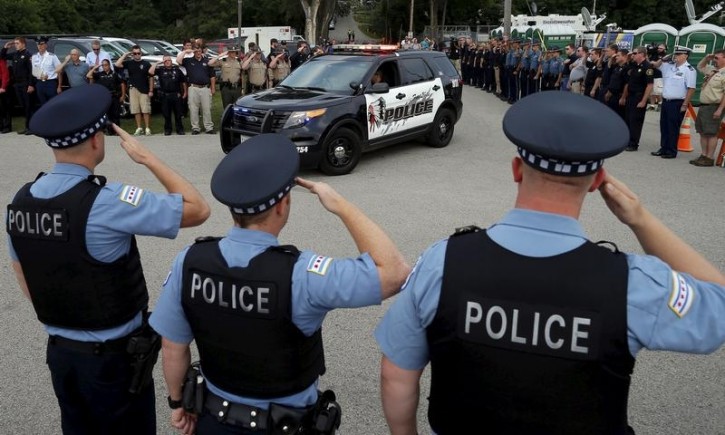
Fox Lake, IL – The head of a task force investigating the fatal shooting of a northern Illinois police officer said Tuesday that a promising lead — video showing three men in the area — did not pan out but that detectives are now trying to determine the identity of a person who left DNA at the crime scene.
In a news conference at the Fox Lake Village Hall, Lake County Major Crime Task Force Commander George Filenko said that investigators identified and questioned three men based on the video from a surveillance system of a home. He said that based on what the men said and evidence they were able to provide, “We have confirmed that we believe at this point that they were not involved in this.”
Lt. Charles James Gliniewicz was killed on Sept. 1 while pursuing three suspicious men on foot in a marshy area of the lakeside community 45 miles northwest of Chicago. In the minutes before he was found dead, Gliniewicz, 52, provided only the vaguest of descriptions, saying over the radio that he was following two white men and one black man.
Filenko said Tuesday that officers were returning to areas they had searched after the slaying and re-interviewing people. He gave no indication that the investigation is close to being completed.
“This is not a sprint,” he said. “This is a marathon.”
Filenko has provided few details about Gliniewicz’s slaying, including where Gliniewicz was shot and whether he was shot with his own gun. But he did suggest Tuesday that detectives have a new avenue to investigate when he said that DNA was found at the scene that did not belong to Gliniewicz.
He said that DNA has been submitted to a national law enforcement database and also is being compared with DNA from samples swabbed from dozens of people who have been interviewed in the course of the investigation.
Filenko declined to say if the DNA was from blood, hair or any other material, saying only, “It was recovered from the crime scene and it is relevant.”
As reported by Vos Iz Neias
